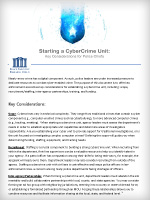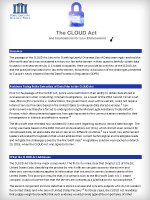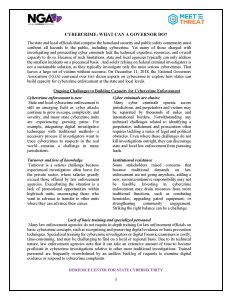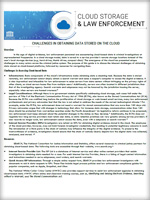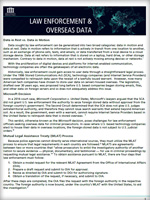What’s New
Cybercrime Blog
Who Has Access to Your Smart Home?
In today’s modern tech world, homes are evolving every day, accommodating more technological advances to meet consumer demands. Any device that can be plugged into a wall outlet can be added to a controlled home network.
Wearable Devices: Are They Secure?
Wearable devices like smart watches, fitness tracking bands, smart glasses and hands free headsets have become easy to sync with smartphones and other devices and applications to help users feel more organized, connected and up-to-date. However, the increasing amount of personal information that wearables contain poses a significant security risk.
Business Email Compromise: A Growing Threat to American Businesses
As technology advances, threats related to cybersecurity grow. According to the FBI, as of 2017 there have been 15,690 recorded reports of business related email compromise (BEC). This growing problem has cost American businesses $675 million, not to mention the security violations these compromises have caused. This is an alarming increase from 2016’s total of $360 million.
New Products
Starting a CyberCrime Unit: Key Considerations for Police Chiefs
Nearly every crime has a digital component. As such, police leaders are under increased pressure to dedicate resources to combat cyber-enabled crime. The purpose of this document is to offer law enforcement executives key considerations for establishing a cybercrime unit, including: scope, recruitment/staffing, inter-agency partnerships, training, and funding.
The CLOUD ACT and Implications for Law Enforcement
The passage of the CLOUD Act (short for Clarifying Lawful Overseas Use of Data) seemingly resolved the Microsoft case and was considered a victory for law enforcement in their quest to lawfully obtain data housed in overseas servers by U.S. based companies. Here we provide an overview of the CLOUD Act and the practical implications for law enforcement, followed by a discussion of the challenges presented by Europe’s newly enacted General Data Protection Regulation (GDPR).
Cybercrime: What can a Governor do?
The National Governors Association (NGA) and their Meet the Threat initiative have created strategies for strengthening cybersecurity practices to connect policy leaders from every state with private-sector experts and federal partners to highlight innovative practices and identify ways state-driven solutions can be replicated nationwide.
This document discuss the ongoing challenges for cybercrime enforcement and provides recommendations for Governors incorporate into their states.
 The Changing Nature of Crime And Criminal Investigations
The Changing Nature of Crime And Criminal Investigations
The United States is experiencing a transformation in
how criminals are using technology to invent new types of crime, and are creating new methods for committing traditional crimes. These developments are fundamental in nature. People who never committed crimes before are tempted when they learn how easy it can be to deal drugs or steal thousands of dollars, without ever having to confront a victim
face-to-face.
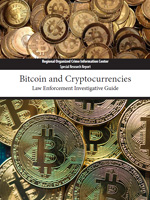 Bitcoin and Cryptocurrencies – Law Enforcement Investigative Guide
Bitcoin and Cryptocurrencies – Law Enforcement Investigative Guide
This investigative guide developed the Regional Organized Crime Information Center (ROCIC) will provide law enforcement with the real facts of bitcoin, what it is, how criminals are using it.
The emergence of the cloud has presented unique challenges to many actors across the criminal justice system. The purpose of this document is to discuss the inherent challenges of obtaining data stored on cloud-based platforms, followed by resources for navigating them.
With the proliferation of digital devices and platforms for internet-enabled communication, technology companies are often the gatekeepers of all electronic data. This document talks about how U.S. law enforcement agencies can secure overseas data through the MLAT process.
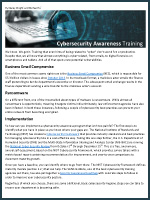 Cybersecurity Awareness Training
Cybersecurity Awareness Training
This paper is designed to casually explain common vulnerabilities and initial steps to proactively protect an agencies infrastructure.
Click here to view the entire document.

